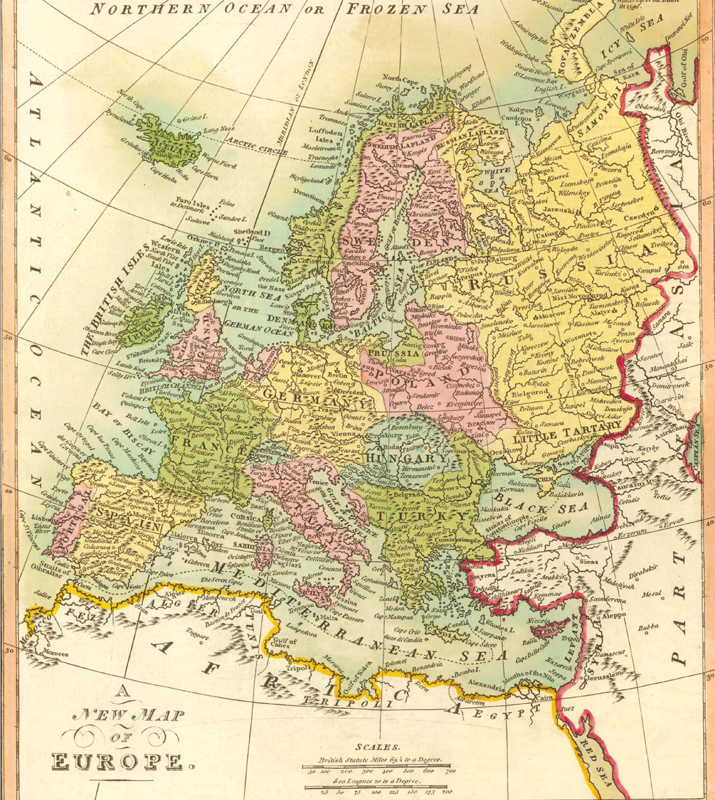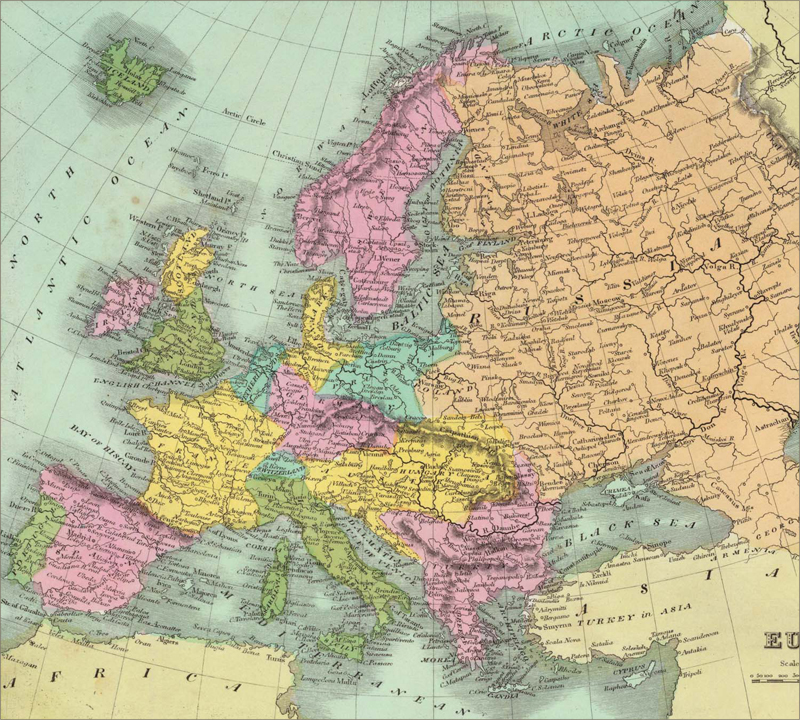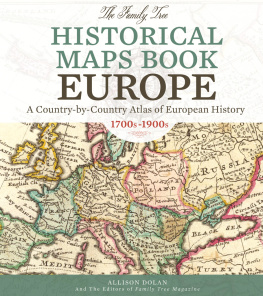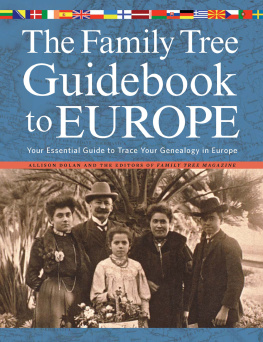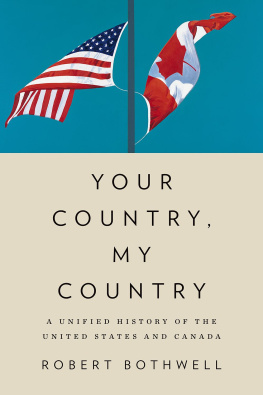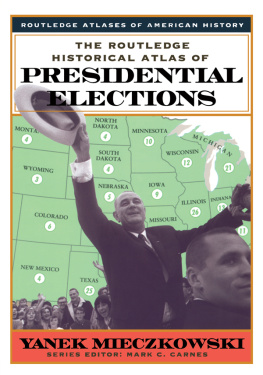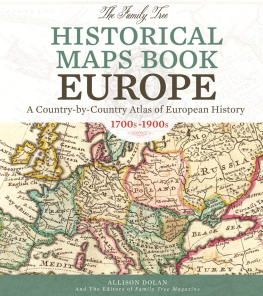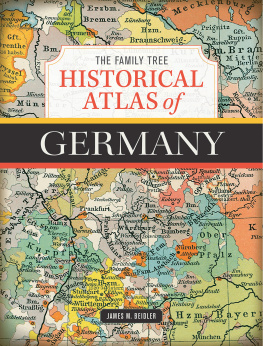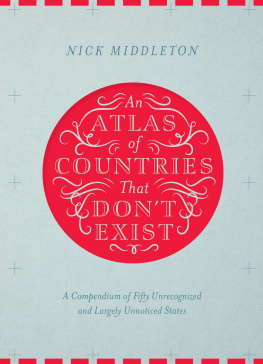Contents
Guide
The Family Tree
HISTORICAL
MAPS BOOK
EUROPE
A Country-by-Country Atlas of European History, 1700s-1900s
ALLISON DOLAN
And The Editors of Family Tree Magazine

Cincinnati, Ohio
shopfamilytree.com
CONTENTS
INTRODUCTION

BRAN, ROMANIA
A good map is both a useful tool and a magic carpet to faraway places. Anonymous
Early in my career, I worked in Bucharest, Romania, as an English editor for Romanian tourism magazines. That job allowed me to travel all across Europeand learn geography and history that would prove unexpectedly useful in my future genealogical endeavors, as well as my work at Family Tree Magazine.
For example, one weekend jaunt took me to Bran Castle, popularly known as Draculas Castle (although Vlad the Impaler Tepes, the inspiration for Bram Stokers character, never actually lived there). The town of Bran sits in Brasov County, within the Transylvania region. To find Bran on a nineteenth-century map, youd need to look at Hungary, not Romania: Transylvania was part of the Austro-Hungarian Empire until after World War I, when the region was awarded to Romania.
Other areas of whats now Romania were in the Ottoman and Russian empires during the 1800s. In fact, Romania didnt exist as a nation at all until 1878.
Romania isnt alone in its absence from nineteenth-century maps. Many of the nations in Europe today werent born until relatively recentlythink the Czech Republic, Slovakia, the Balkan States, Ukraine, Belarus, and the Baltics. Germany as we know it didnt become a unified nation until 1871; Italy, not until 1861.
Then theres the historical tug of war over border territories such as Alsace-Lorraine, fought over by Germany and France. Although France ultimately won the territory, this visitor to Strasbourg couldnt mistake the German influence on the citys architecture and local cuisine.
All these complications can trip up genealogists researching European ancestors. Even the most basic questionwhich country was the old country for my family?doesnt always have a straightforward answer. Maybe your third-great-grandfathers passenger list says he came from Russia, but his village now is in Poland.
Enter the Family Tree Historical Maps Book: Europe, a compendium of old maps designed specifically for genealogists trying to unravel these complexities. The 200-plus maps inside span the 1700s to the 1900s, when most European immigration to America took placeallowing you to visualize your ancestors homeland when they left it, and see how borders and jurisdictions changed over time.
Weve grouped the maps by country for easy reference, and ordered the chapters geographically so that adjacent nations are also near each other in the book: The Germany and Switzerland chapter, for instance, is next to Austria and Hungary, just as they are on a map. Within each section, maps are presented chronologically.
We selected primarily English-language maps in recognition of our English-speaking audience: Mastering unfamiliar geography is tricky enough without accounting for additional languages. For untangling the variations in foreign place names, we advise using a gazetteer (place-names dictionary) focused on your ancestors country. I also highly recommend the Historical Atlas of Central Europe by Paul Robert Magocsi (Washington State University Press) as a supplemental reference for that region.
To aid your understanding of the maps herein, as well as the lay of your ancestors homeland, this book includes a country-by-country listing of administrative divisions. You can download an expanded version of this directory from our website .
The books large format helps give you both the big-picture and small-detail view. Each map shows the entire country or region while maximizing the readability of labels such as cities, counties, and geographic features. Of course, its impossible for a book like this to show every speck of the often-incredible level of detail in these old maps. But the complete index in the back of the book will help you locate maps of interest for viewing online in greater depth.
Many of the maps in this volume come from the amazing David Rumsey Map Collection , whose website has a special viewer that lets you zoom in to a stunning level of detail. Other sources include the Library of Congress Geography and Map Division and the treasure trove of digitized materials on Wikimedia Commons. Thanks to these organizations work preserving and sharing old maps, we can explore our ancestors world today. Turn the page to begin your time-travel adventure.
Allison Dolan
PUBLISHER & COMMUNITY LEADER
Family Tree Magazine
Europe
KEY DATES
1648
End of Thirty Years War results in rise of France and Sweden, and decentralization of the Holy Roman Empire (covering a large portion of Central Europe).
1713
War of the Spanish Succession prevents the union of France and Spain; Spain cedes parts of the Netherlands and Italy to Austria.
1721
Great Northern War concludes with the decline of the Polish-Lithuanian Commonwealth and Sweden, and the rise of Tsarist Russia.
1815
Congress of Vienna ends Napoleonic Wars, stripping Frances territorial gains, dissolving the Holy Roman Empire, and laying the foundation for German and Italian unification.
1919
Treaty of Versailles dismantles Austria-Hungary and redraws Central European borders after World War I.
1921
Southern Ireland becomes the Irish Free State; six northern counties remain part of the United Kingdom (now Northern Ireland).
1937
New constitution re-establishes the Republic of Ireland (formally recognized by Great Britain in 1949).
1945-1947
Potsdam Conference and the Paris Peace Treaties end World War II, with restoration of most prewar borders and a division of Europe into the Soviet-controlled Eastern Bloc and the U.S.-allied Western Bloc, spawning the Cold War.
1989-1991
Revolutions in Eastern Bloc countries result in the fall of Communism and dissolution of the Soviet Union.

